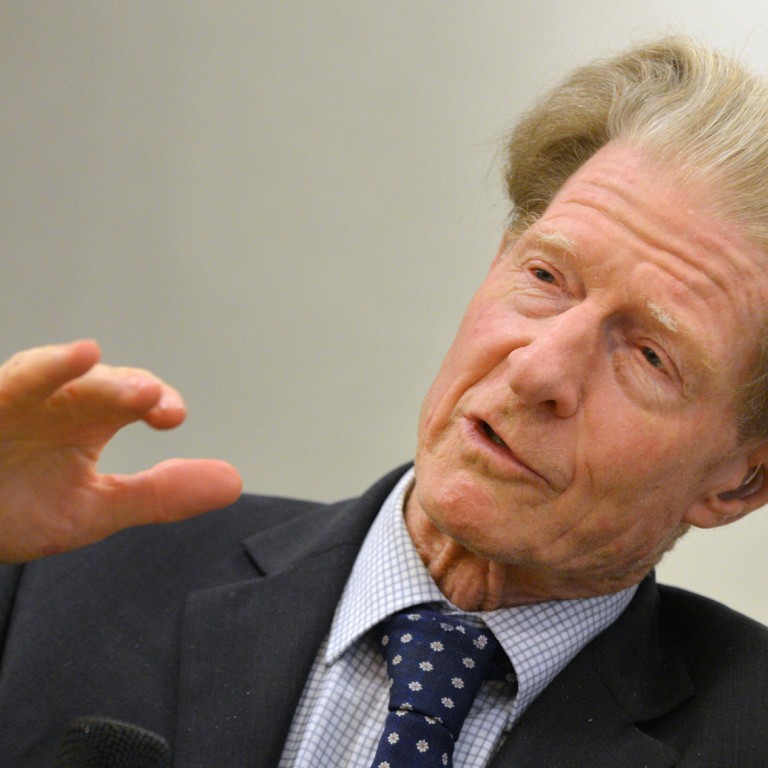
Stem cell researchers on brink of cure for macular degeneration
'Father of cloning' says macular degeneration treatment is already being tested in humans
Sufferers of an incurable form of a common age-related eye disease that leads to blindness could soon be cured, thanks to ground-breaking stem cell research.
Developmental biologist and Nobel laureate Professor John Gurdon says that stem cell replacement therapy for the dry form of macular degeneration has been shown to "work quite well" in animals and is now being tested in humans.
Speaking in Hong Kong yesterday, the 80-year-old Gurdon said: "My understanding is that the permission to offer this as a therapeutic treatment is about six months away. The trials in humans take about three months to see if they're successful, and then after that it should really be no problem in making [the treatment] available to patients."
The disease gradually destroys sharp, central vision needed for seeing objects clearly and for common tasks such as reading and driving. It progresses with the death of retinal pigment epithelium (RPE), a dark-coloured layer of cells which nourishes the visual cells in the retina.
Douglas Sipp, from Japan's RIKEN Centre for Developmental Biology, said a number of organisations - including his - are studying stem-cell-derived RPE to treat macular degeneration, "but none has really progressed beyond early stage safety testing".
Sipp clarified that it is possible that permission to initiate a clinical trial using this treatment may be six months away, but offering the therapy to the masses may take some time since phase-two and phase-three clinical trials would take years.
"It is important to continue the research in a rigorous and responsible manner, while accepting the real possibility that this approach may not work," he said.
Age-related macular degeneration is the leading cause of visual impairment and blindness in people aged 55 and over in the developed world. The disease has two forms: wet and dry. Wet macular degeneration represents an advanced stage of the disease, and is almost always preceded by the dry version. It progresses more quickly and can lead to blindness in three months.
Scientists have been working on harvesting and implanting stem-cell-derived replacement RPE cells to treat or cure it.
Widely regarded as the "father of cloning'' for his stem cell research, Gurdon was the keynote speaker at the University of Hong Kong's Frontiers in Biomedical Research symposium yesterday.
Gurdon explained it's now possible to make in the laboratory layers of RPE cells in a sheet, which are then inserted into the eye underneath the retina to support the photoreceptors. Implantation, he said, is an outpatient procedure with an estimated cost of about £4,000 (HK$50,800) - no more complicated than and as affordable as surgery for cataracts, another common age-related eye disease.
"[This] looks to me to be by far the most hopeful prospect of stem cell replacement therapy," he said. "This would be most likely the first case where these reprogrammed cells are likely to be actually useful to patients."

